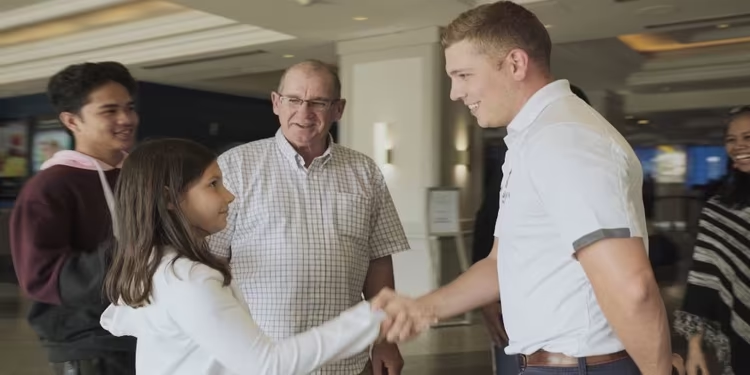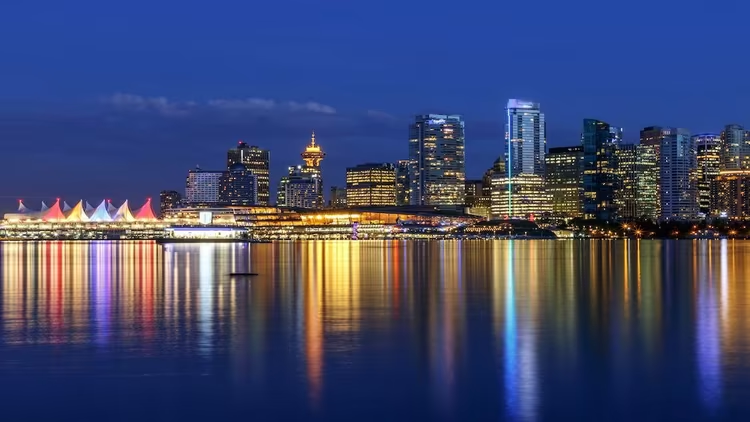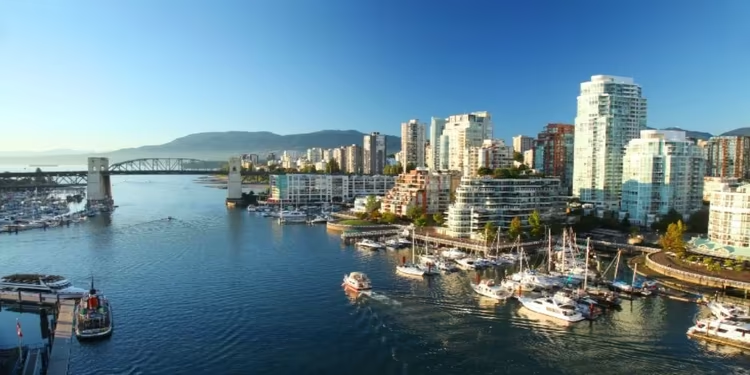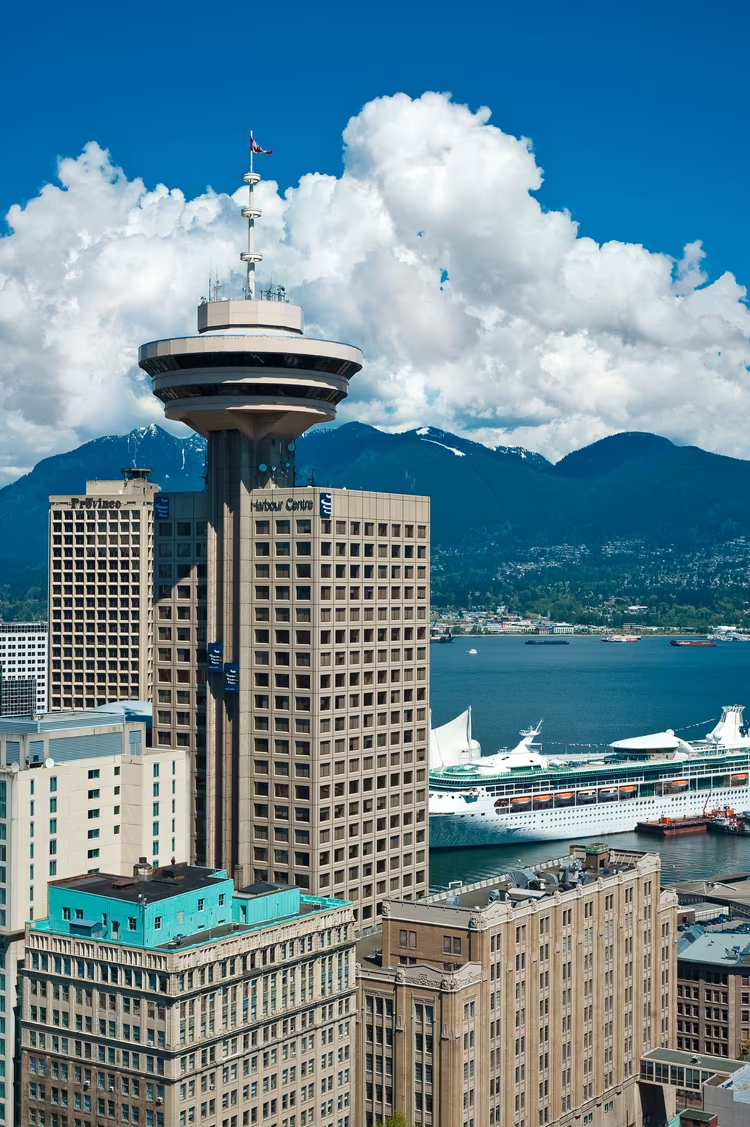My Bookings
Please Enter Your Booking Code To Find Your Booked Tour!

Vancouver Travel Guide to Plan a Perfect Trip
Table of Contents
Welcome to your ultimate Vancouver Travel Guide—where nature and city meet on Canada’s stunning west coast. Framed by snow-capped mountains and the Pacific Ocean, Vancouver is a city that offers something for everyone. Hike in the morning, kayak in the afternoon, and dine on global cuisine by evening. From vibrant neighborhoods to coastal trails, this guide will help you plan a trip that’s as laid-back or action-packed as you want it to be.
Best Time to Visit Vancouver
Vancouver is a year-round destination, but the best time to visit depends on what you want to see and do. Each season offers different adventures and cultural events.
Spring (March to May)
Spring in Vancouver is a beautiful time to visit. The weather is mild, with temperatures ranging from 8°C to 16°C (46°F to 61°F). One of the highlights is the blooming of cherry blossoms across the city. Crowds are smaller, and hotel prices are lower than in summer.
Summer (June to August)
The days are long, warm, and sunny, with temperatures averaging 20°C to 25°C (68°F to 77°F). It’s the perfect time for outdoor activities like biking the Seawall, visiting beaches, or hiking on Grouse Mountain.
Discover Vancouver after dark on our top-rated Scenic Twilight Tour
Fall (September to November)
Fall is a peaceful and colorful time to visit. The crowds begin to thin, and prices drop. The weather is cool and crisp, with stunning fall foliage in places like Stanley Park and Queen Elizabeth Park.
Winter (December to February)
Winters in Vancouver are mild compared to other parts of Canada, with average temperatures around 3°C to 8°C (37°F to 46°F). Snow is rare in the city, but you can find plenty of it at nearby ski resorts like Grouse Mountain and Cypress Mountain. This is a good time to enjoy museums, galleries, and cozy cafés. Just pack a waterproof jacket—November is the rainiest month in Vancouver.
Where to Stay in Vancouver?
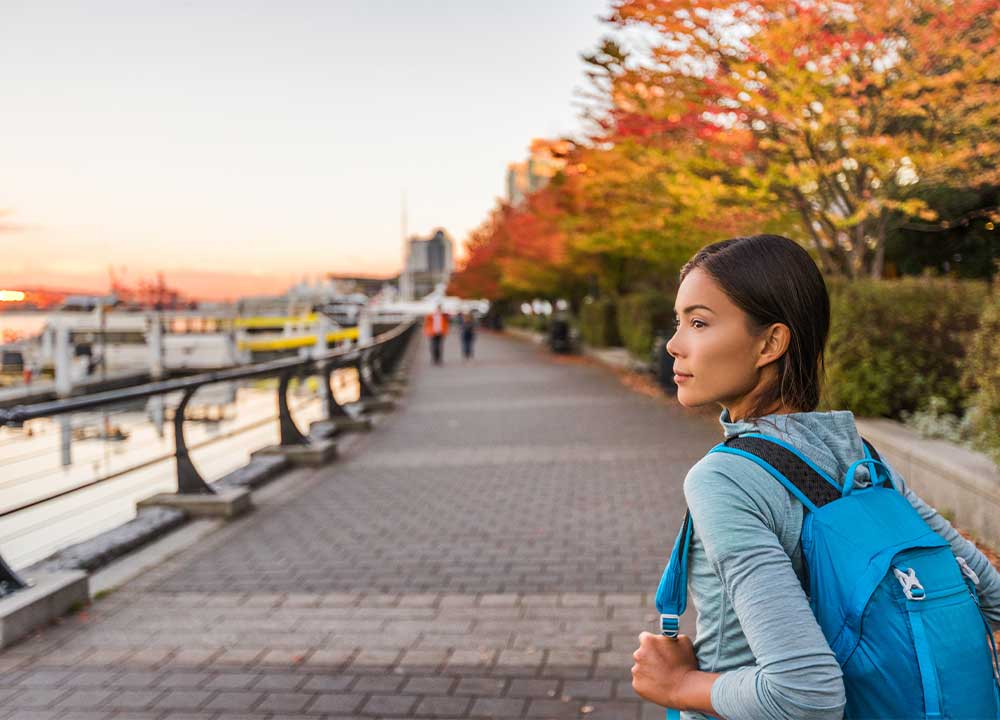 Vancouver has many great neighborhoods for visitors. Each area offers something different, from city views to beach vibes. Whether you want luxury or budget-friendly options, there's a perfect place to stay.
Vancouver has many great neighborhoods for visitors. Each area offers something different, from city views to beach vibes. Whether you want luxury or budget-friendly options, there's a perfect place to stay.
Downtown Vancouver
Downtown is the heart of the city. It’s central, walkable, and close to major attractions like Stanley Park, the Vancouver Art Gallery, and shopping on Robson Street. You’ll have easy access to public transportation, restaurants, and nightlife.West End
The West End is a quiet, residential area next to Downtown. It’s close to beaches like English Bay and has easy access to Stanley Park.
Yaletown
Yaletown is a modern, stylish neighborhood known for its dining and nightlife. It has trendy restaurants, patios, and chic hotels. It's a good spot for couples or anyone looking for a lively, upscale vibe.
Gastown
Gastown is one of Vancouver’s oldest neighborhoods. It’s filled with historic sites, cobblestone streets, and boutique shops. This area blends the old with the new and is ideal for travelers interested in culture, food, and local design.Kitsilano (Kits)
Kitsilano has a relaxed, beachy feel. It’s known for Kits Beach, boho shops, yoga studios, and local cafés. It’s perfect for those who want to stay near the ocean but still be close to the city.
Mount Pleasant / Main Street
This artsy area is filled with colorful murals, hipster cafés, vintage shops, and craft breweries. It’s a great place to stay if you want a local experience and enjoy creative spaces.
Richmond
Richmond is close to the airport and has some of the best Asian food in North America. It’s not in the city center but is well-connected by Canada Line. It’s a smart choice for travelers with early or late flights or food lovers seeking something special.
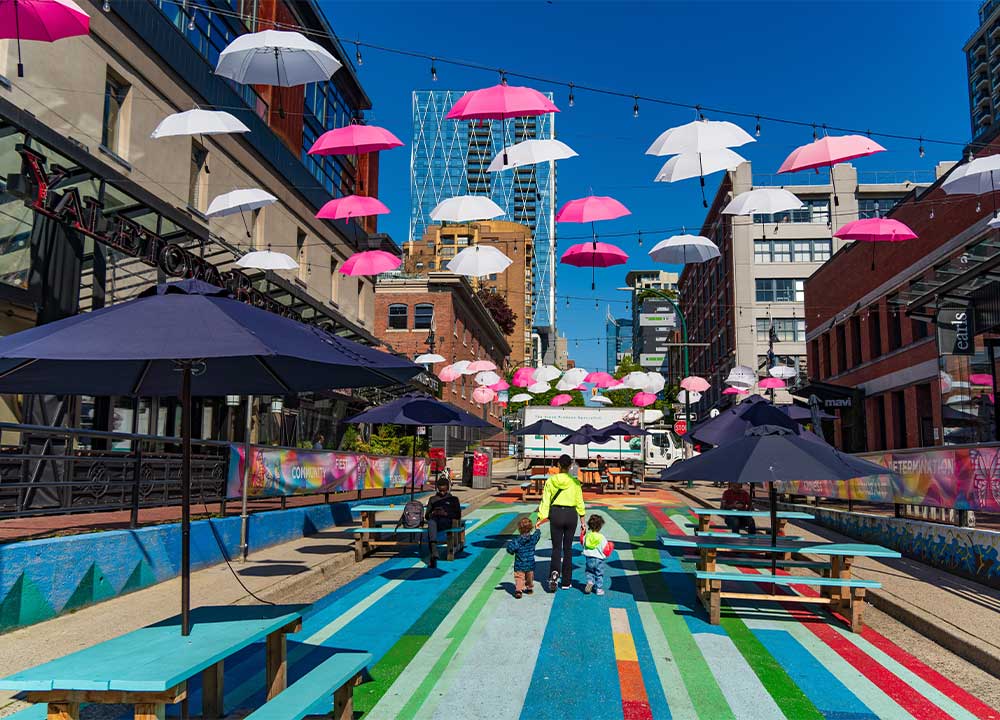
Top Things to Do in Vancouver
Vancouver is full of beautiful places to explore. From green parks to cultural spots, there’s something for every kind of traveler. Here are the best things to see and do in the city.
Stanley Park & the Seawall
Stanley Park is one of Vancouver’s top attractions. This massive urban park is filled with tall trees, gardens, beaches, and walking paths. The Seawall is a scenic 28-kilometer path that wraps around the park. You can walk, jog, or bike while enjoying views of the Burrard Inlet and the city skyline.
Granville Island & Public Market
Granville Island is a lively place to shop, eat, and relax. The Public Market is the main attraction, offering fresh produce, baked goods, seafood, and handmade crafts. You’ll also find art galleries, theaters, and cafés.
Taste your way through Granville Island on this guided food walking tour
Capilano Suspension Bridge & Treetops Adventure
Just a short ride from downtown, the Capilano Suspension Bridge lets you walk above the forest. The views are amazing. Try the Treetops Adventure and Cliffwalk for more fun among the trees.
Grouse Mountain
Grouse Mountain offers fun all year. In summer, take the Skyride gondola for views or hike the tough Grouse Grind trail. In winter, you can enjoy skiing and snowboarding. You can also see grizzly bears in the wildlife refuge or visit the lumberjack show.
Vancouver Aquarium
Located inside Stanley Park, the Vancouver Aquarium is home to sea otters, jellyfish, and colorful fish. It’s educational and fun, making it perfect for kids and adults.
Science World
This shiny dome by False Creek is full of hands-on science exhibits. Kids love the play areas, experiments, and fun shows.
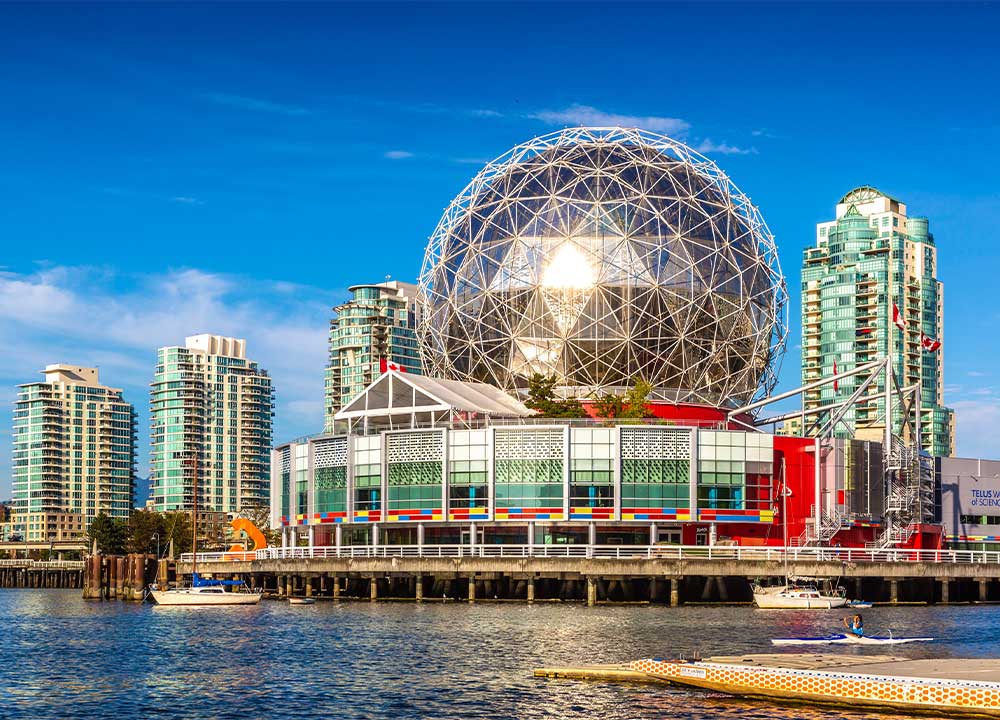
Museum of Anthropology
This museum at UBC focuses on Indigenous art and history. It has large totem poles and beautiful carvings. It’s a good place to learn more about the local First Nations cultures.
VanDusen Botanical Garden & Bloedel Conservatory
VanDusen is a peaceful garden with plants from around the world. In winter, the Festival of Lights is a magical experience. Nearby, the Bloedel Conservatory has tropical birds and plants inside a large glass dome at Queen Elizabeth Park.
FlyOver Canada
This fun ride takes you on a virtual flight across the country. You’ll hang in the air, move with the film, and feel wind and mist.
Dr. Sun Yat-Sen Classical Chinese Garden
Step into a quiet, traditional garden in the middle of the city. It has koi ponds, stone bridges, and peaceful courtyards.
UBC & Pacific Spirit Regional Park
Visit the University of British Columbia (UBC) for museums, gardens, and ocean views. Nearby, Pacific Spirit Regional Park has peaceful forest trails.
Queen Elizabeth Park
This park sits on one of the highest points in the city. It has stunning views, gardens, fountains, and the Bloedel Conservatory. It’s a great place to watch the sunset or take family photos.
Food & Drink in Vancouver
Vancouver is known for its fresh ingredients and global flavors. The city’s food scene blends Canadian classics with dishes from around the world. Whether you're looking for street food or fine dining, there’s something tasty for every budget.
Iconic Eats to Try
Vancouver is one of the best places in North America for sushi, thanks to its location on the Pacific Ocean. Be sure to try fresh wild salmon rolls or pressed sushi.
Other must-try foods include:
- Poutine – fries topped with cheese curds and gravy
- Dumplings – steamed, fried, or soup-filled from local Chinese or Taiwanese spots
- Seafood – especially Pacific halibut, spot prawns, and oysters
- Bannock – a traditional Indigenous fry bread, often served sweet or savory
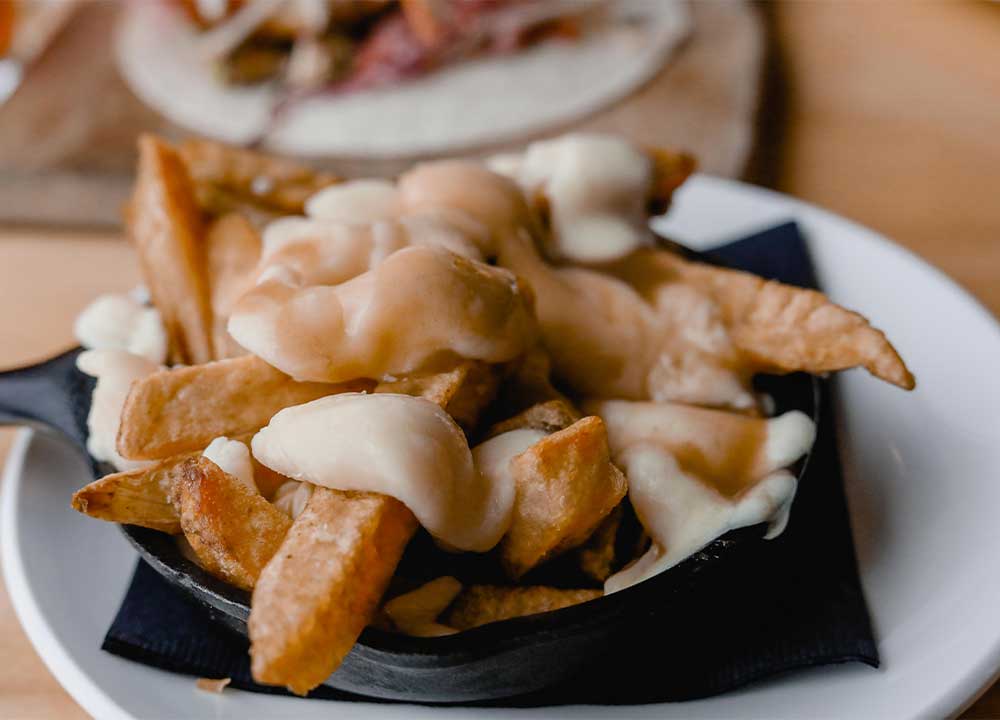 These local dishes are available in both high-end restaurants and casual takeout spots.
These local dishes are available in both high-end restaurants and casual takeout spots.
Local Culture & Indigenous Heritage
Vancouver is located on the traditional, ancestral, and unceded territories of the Musqueam, Squamish, and Tsleil-Waututh Nations. These communities have lived here for thousands of years and continue to shape the city’s identity today.
Coast Salish Territories
The lands around Vancouver are part of the larger Coast Salish Territories. When you visit Vancouver, you are walking on land with rich history and culture.
Musqueam, Squamish, and Tsleil-Waututh Sites
Throughout the city, you can find signs, artworks, and exhibits that honor the local Nations. Visiting these places helps you understand and respect the people who were here first.
Museum of Anthropology & Indigenous Art
Located at the University of British Columbia, the Museum of Anthropology is one of the best places to learn about Indigenous cultures in British Columbia. It features totem poles, carvings, masks, and modern Indigenous art. Many of the items were created by artists from the Musqueam, Squamish, and Tsleil-Waututh Nations.
Salmon n’ Bannock Bistro
This restaurant is Indigenous-owned and serves traditional foods with a modern twist. Try wild salmon, bison burgers, or fresh bannock bread. It’s a special place to enjoy local flavors and support Indigenous business.
Talking Stick Festival
This annual festival highlights Indigenous performing arts. It includes music, dance, theatre, storytelling, and visual art from First Nations, Métis, and Inuit artists. Events take place all over the city and welcome everyone to learn and celebrate together.
See the best of Vancouver in one day on this all-in-one guided city tour
Frequently Asked Questions (FAQ)
How many days is enough to visit Vancouver?
3–4 days is perfect for seeing the top sights like Stanley Park, Granville Island, and Capilano Suspension Bridge. If you want to explore nearby spots like Grouse Mountain, Whistler, or Victoria, plan for 5–7 days.
What is the number one tourist attraction in Vancouver?
Most people say Stanley Park because of its size, beauty, and the Seawall. Others love Grouse Mountain for year-round views and activities, or Capilano Suspension Bridge for the thrill and forest setting.
What’s the best month to go to Vancouver?
September is ideal. The weather is still warm, the summer crowds are gone, and the fall colors begin to show in places like Queen Elizabeth Park and Pacific Spirit Regional Park.
Is Vancouver expensive to visit?
Yes—Vancouver is one of the most expensive cities in Canada, especially for hotels and dining. But many top experiences like walking the Seawall, visiting public markets, and enjoying city parks are free or low cost.*
What is the rainiest month in Vancouver?
November usually brings the most rain. Locals don’t often use umbrellas—a good rain jacket is more practical.
Conclusion
Vancouver is more than just a travel destination—it’s a lifestyle. It’s one of the few cities in the world where you can paddleboard in the morning and summit a mountain by afternoon, all without ever leaving the city limits. This rare blend of urban energy and outdoor adventure makes it unforgettable.
With global flavors served at every corner, deep Indigenous roots, and neighborhoods full of charm and creativity, Vancouver stands as a true west coast gem. From the forest trails of Grouse Mountain to the cultural pulse of Granville Island, it’s a place where local pride meets world-class beauty.
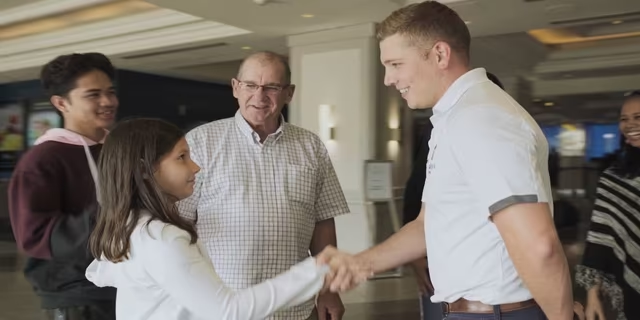
Vancouver Granville Island Food Walking Tour
2 Hours
Explore the culinary gems of Granville Island on our Vancouver Granville Island Food Walking Tour. A taste of vibrant flavors awaits.
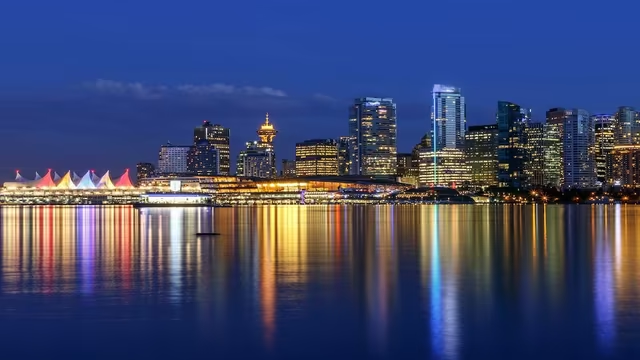
Scenic Vancouver Twilight Tour
5 Hours
Discover Vancouver's twilight beauty on our Scenic Vancouver Twilight Tour, an enchanting evening adventure.
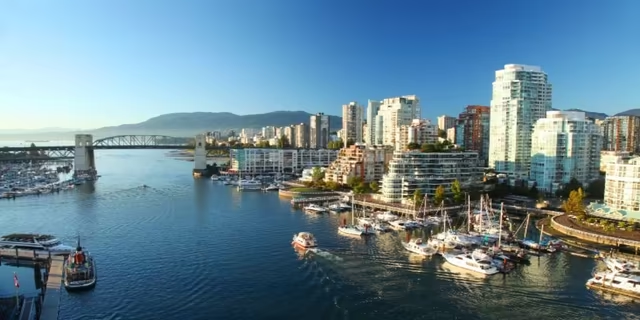
Vancouver False Creek Walking Tour
2 Hours
There is no better way to experience Vancouver than to walk through the streets and immerse yourself in the city’s culture.
Related Blogs

Non touristy things to do in Vancouver
Delve into secret spots, from quaint cafes to picturesque trails, and uncover the true essence of Vancouver away from the tourist hustle. Let us unveil the city's best-kept secrets for an unforgettable exploration!

Ayesha Munir

Best Places to Walk in Vancouver
Discover the best places to walk in Vancouver! From Stanley Park's scenic seawall to Granville Island's vibrant streets, explore top trails, parks, and urban routes with stunning views and cozy coffee shops.

Sadia Nazar

Things to Do in Vancouver
Known for its majestic coastal landscapes, unforgiving mountain range, and mild climate, Vancouver is tourist top-choice destination in Canada.

Ayesha Munir

36 Best Things to Do in Vancouver on a Weekend
Embark on an extraordinary weekend journey in Vancouver! Prepare for an unforgettable adventure with our ultimate guide, packed with insider tips and must-see attractions to make the most of your time in this vibrant city on the West Coast.

Ayesha Munir
Related Tours
Quick Links
Book your Tour
Get in Touch
Toll Free
1-888-961-6584
Local
1-289-271-9767
© 2025 See Sight Tours. All Rights Reserved.
1-888-961-6584

